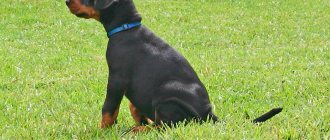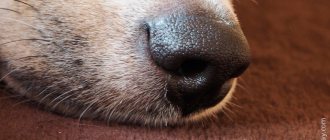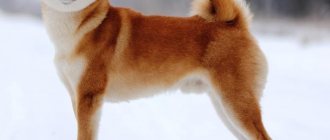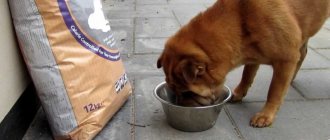What kind of disease is this?
The term hygroma was given to one of the capsule-shaped benign formations, the viscous serous fluid inside of which is tightly held by dense connective tissue. The consistency of the contents can be very hard, like cartilage or bone, or resemble frozen dough.
The capsule cells are degenerated: one part of the cells is responsible for the synthesis of capsule fluid, and the other is responsible for strengthening the walls. For this reason, they are able to provoke the appearance of new hygromas, which explains frequent relapses.
In addition, sometimes hygroma can spontaneously decrease or disappear altogether, but eventually appear again.
The formations, as a rule, are always inactive, as they are firmly connected to the articular capsule. Such pseudotumors choose the areas of joints and tendon sheath as their localization site.
Without the presence of certain unfavorable factors, hygroma grows quite slowly and can maintain a constant size even for several years.
But in cases of developing inflammation or with systematic injury, it begins to rapidly increase. Moreover, new hygromas often appear, often of even larger sizes.
What is the difference?
From lymphatic extravasate
Hygroma can be differentiated from lymphoextravasate by three main characteristics:
- Contents of the capsule. With hygroma, the capsule is filled with serous fluid with impurities of fibrin, crystals and clots of cholesterol, as well as tiny intra-articular fragments of cartilage. With lymph extravasation, the subcutaneous cavity is filled with lymph from damaged nodes: a clear liquid with a reddish or yellow tint.
- Consistency. The hygroma is a very dense, immobile capsule, while the swelling with lymphatic extravasation moves freely and in waves during palpation.
- Localization location. Lymph accumulations due to a ruptured node can form almost anywhere on the dog’s body. Hygroma is characterized exclusively by the areas of the joint capsule and tendon sheaths of the elbow joint, the heel bone and the area above the occipital protrusion.
For bursitis
- Etiology of the disease. Bursitis is a severe inflammation of the synovial joint capsule against the background of chronic brucellosis or sporotrichosis, autoimmune disorders, and physical overload. And the formation of hygroma in a dog is mostly due to systematic trauma.
- Course of the disease and symptoms. The second name for hygroma is false bursitis, since it is its chronic form. Bursitis most often occurs in adult dogs. As for hygroma, it can occur even in a puppy. With bursitis, the course of the disease causes significant discomfort and severe pain, due to which the dog begins to limp, becomes lethargic and irritable. At the same time, even a relatively large hygroma rarely causes pain to the pet.
Risk factors
The most commonly diagnosed condition is elbow bursitis in dogs. The following factors can contribute to the development of inflammation in the bursa:
- injuries of various etiologies in the area of the synovial bursa;
- intense loads on the musculoskeletal system;
- concomitant joint pathologies;
- impaired metabolism;
- incorrect content.
The acute infected form is usually the result of a wound, hematoma or abrasion in the elbow joint. Often the pathology is caused by Staphylococcus aureus in dogs, which has penetrated into the tissue through the wound surface.
Young dogs are more susceptible to the disease; adult dogs develop a so-called callus on the elbows.
Autoimmune pathologies, including rheumatoid arthritis, can also contribute to the development of bursitis. In this case, the animal experiences an ossifying form, in which salts are deposited in the synovial bursa.
Fluid accumulation in the bursa is often observed after surgical treatment of joint dysplasia in dogs and other pathologies of the musculoskeletal system.
Bursitis often occurs in service and guard animals that are kept in unsuitable conditions. When a dog regularly lies on a hard surface without bedding, degenerative changes in the elbow area develop as a result of constant pressure.
Causes of appearance on the elbow and other places
Injuries, rubbing, uneven growth of the animal, systematic compression of the joint capsule and prolonged stay in the same forced position are the main causes of hygroma in dogs. But in medicine there are several more versions, partially or fully substantiated, against the background of which hygroma is formed.
Inflammatory processes in the joints
With inflammation in the joint or synovial vagina, the integrity of the structure of the synovial epithelium is affected. Connective tissue replaces secretory functional tissue, but under load it is not able to compete with healthy tissue in terms of resistance to constant pressure on the joint cavity.
Over time, the weak area moves beyond the contours of the capsule, and an additional pathological cavity is formed next to the synovial cavity - a hygroma.
Dysmetabolism
The synovial epithelium actively participates in the metabolic processes of synovial fluid. The fluid is first produced by cells from the inner layer of the capsule, after which it performs nutritional and lubricating functions, and is then reabsorbed for reuse by the same cells.
This cycle is continuous, and the rate of secretion is variable and regulated by specific mediators. This is how the body prevents excessive trauma and subsequent wear and tear of the synovial sheaths during increased stress.
A number of autoimmune diseases lead to a pathological increase in the rate of fluid secretion due to an excess of synthetic mediators in the blood. This is due to the formation of specific antibodies. As a result, the process of liquid formation is many times faster than its disposal, and the pressure in the capsule increases more and more.
By a certain time, pressure injures the epithelium, and weak, thinned zones form. For this reason, the capsule extends beyond its boundaries, and weak zones nearby form an adjacent cavity - a hygroma.
Symptoms
Externally, hygroma is an oval or round subcutaneous swelling of different sizes. Usually it is completely painless for the animal, without obvious signs of inflammation and does not cause lameness when walking.
In some cases, after infection occurs, the dog may experience pain, and traces of discharge and ulceration appear on the skin.
First aid for an animal
Since it is not so easy to identify bursitis, self-medication of the animal is completely pointless. Only a veterinarian can make an accurate diagnosis after a detailed examination of the dog and an x-ray. If moving causes severe pain to your pet, it is advisable to call a specialist to your home. This service is more expensive than visiting a veterinary clinic on your own, but often it is the only possible solution.
A sick animal should never sleep or rest on the bare floor.
Before the veterinarian sees the animal, it is necessary to ensure that it is as comfortable as possible. To create such conditions, the owner will need:
- stop any training or active play with the dog if he has not done so before;
- provide the animal with soft and voluminous bedding to prevent the swollen joint from coming into contact with the hard, cold floor;
- eliminate all possible drafts;
- refuse any compresses. If a compress can be useful for the aseptic form of bursitis, then for purulent bursitis it can only harm the dog, contributing to the occurrence of sepsis;
- If fistulas occur, do not under any circumstances try to remove pus oozing from the affected area.
If your dog is showing signs of bursitis, you should take him to the vet as soon as possible.
Even if the animal’s lameness is not noticeable and does not lead to visible changes, it is advisable to consult a doctor as quickly as possible, since the acute form can develop in just a few days. The sooner the owner involves a veterinarian, the higher the chance of saving the dog.
Treatment
There are mixed opinions regarding the treatment of hygroma. Most breeders, when faced with this problem, do not use specific treatment. This is facilitated by the version that the hygroma acts as a compensatory protection (protective cushion) that softens the pressure on the joint.
For example, according to statistics from foreign veterinarians, if a hygroma occurs during a dog’s growth period, it goes away on its own without treatment within several months.
But as for traditional conventional therapy, hygroma is treated in different ways.
- Paraffin applications.
- UV irradiation.
- Tight bandaging.
- Periodic aspiration of contents (pumping out fluid).
- In difficult cases, cavity drainage is used using passive or glove drainage . In the first 5 days after surgery, it is necessary to take antibiotics and treat the cavity with Dioxidin for 7 days. If pus is released through the drainage, antibiotics are prescribed depending on its color and consistency, and the drainage is completely removed no earlier than after 1-1.5 months.
How is liquid pumped out?
After treatment with an antiseptic, the skin in the area of the hygroma is pierced using a thin trocar or syringe and the contents are sucked out. The cavity is treated with novocaine, after which a solution of dexamethasone or prednisolone is injected. A bandage with foam rubber or cotton wool is applied to the elbow to protect against impacts.
With positive progress, 1-3 injections are sufficient with a time interval of 18 to 60 days, depending on the condition of the tumor. The technique has important disadvantages: a high probability of relapses, infection and the risk of developing a purulent form of hygroma due to corticosteroid therapy.
Operation
Removal of hygroma tissue is a method fraught with complications due to difficult healing in the surgical area. It is used only in extreme cases when none of the methods has given results.
Folk remedies
There is no adequate and effective treatment for hygroma in dogs using all kinds of folk remedies.
Prevention
To completely protect your pet from potential hygroma, you should first of all make sure that there are no drafts or dampness where he spends the maximum amount of time. The dog's bed should match the size of the animal and be comfortable and soft.
It is extremely undesirable for health to sleep on linoleum or, especially, tiles. If your dog is a large breed, be sure to include glucosamine and chondroitin supplements in your diet. And if there is a breed predisposition to bursitis or hygroma, do not allow high jumps and high barriers.
What to do if you can’t quickly see a veterinarian
If you notice that your pet has developed bursitis, but cannot take it to the vet soon, administer first aid yourself.
First of all, make sure that the dog is lying on soft bedding. Avoid any stress until your pet is examined by a specialist. Do not apply heat or cold to the tumor, as this can aggravate the condition.
Important. If the bursitis “bursts,” be sure to apply a sterile bandage to prevent dirt from getting inside the bursa.











